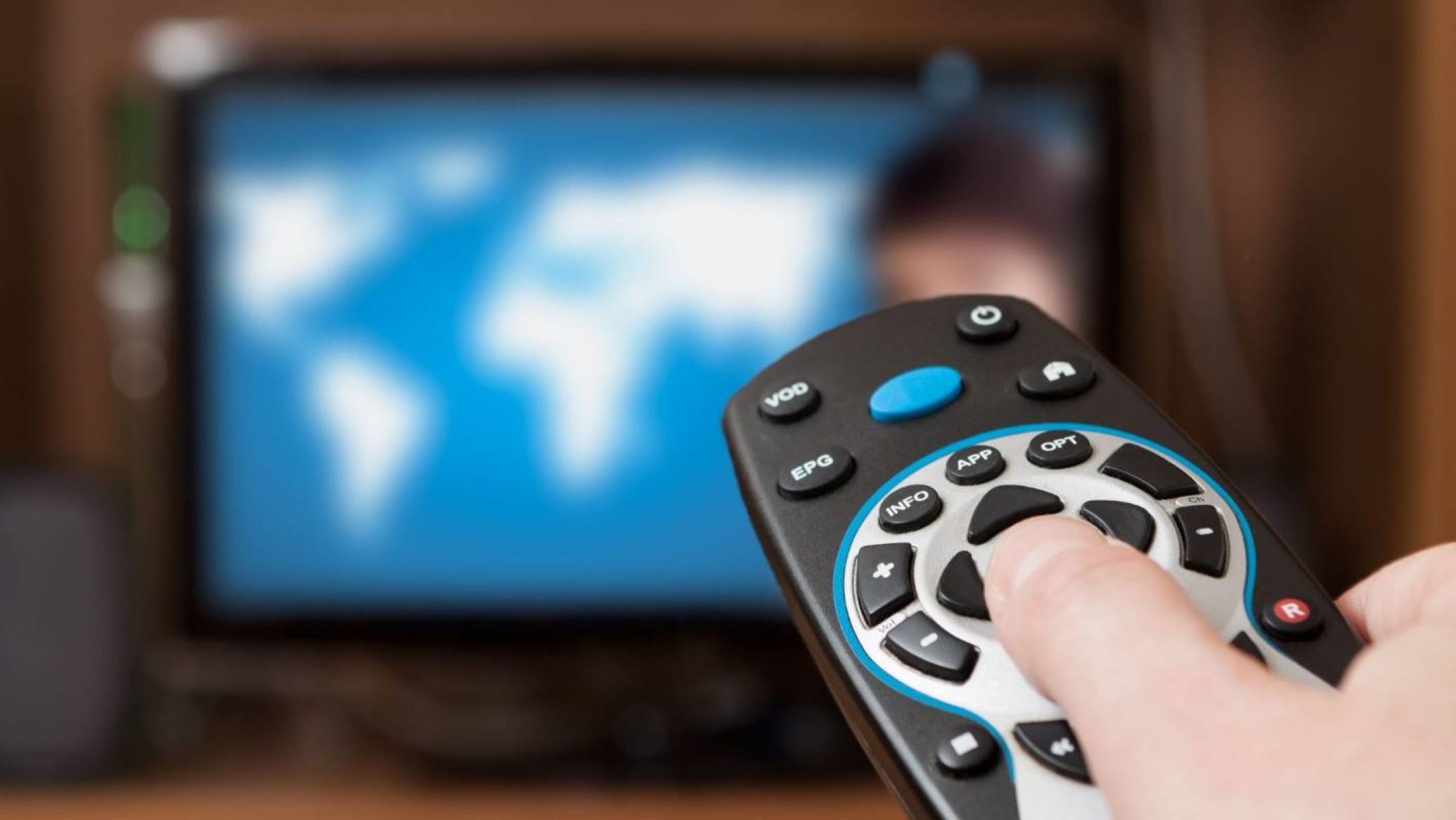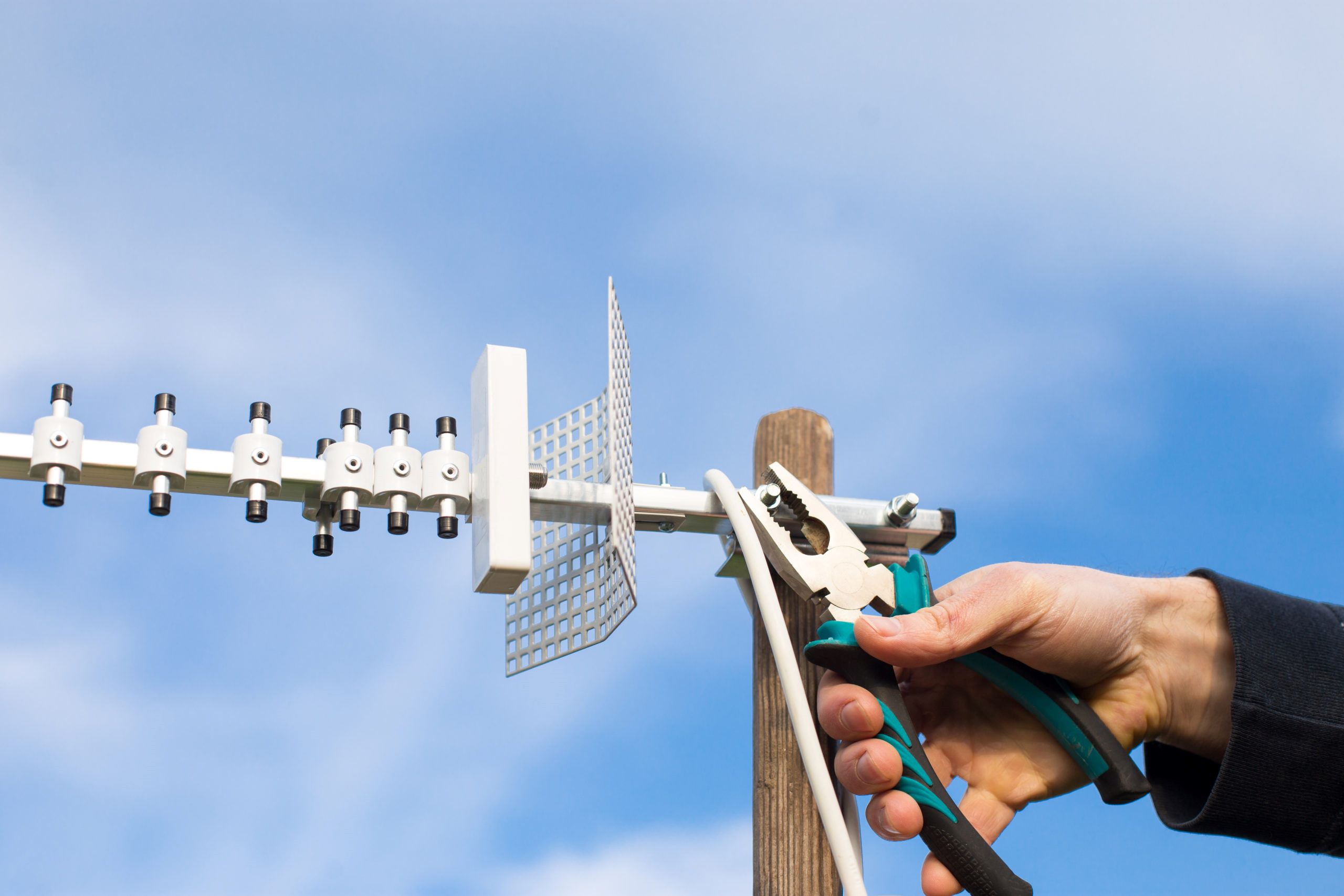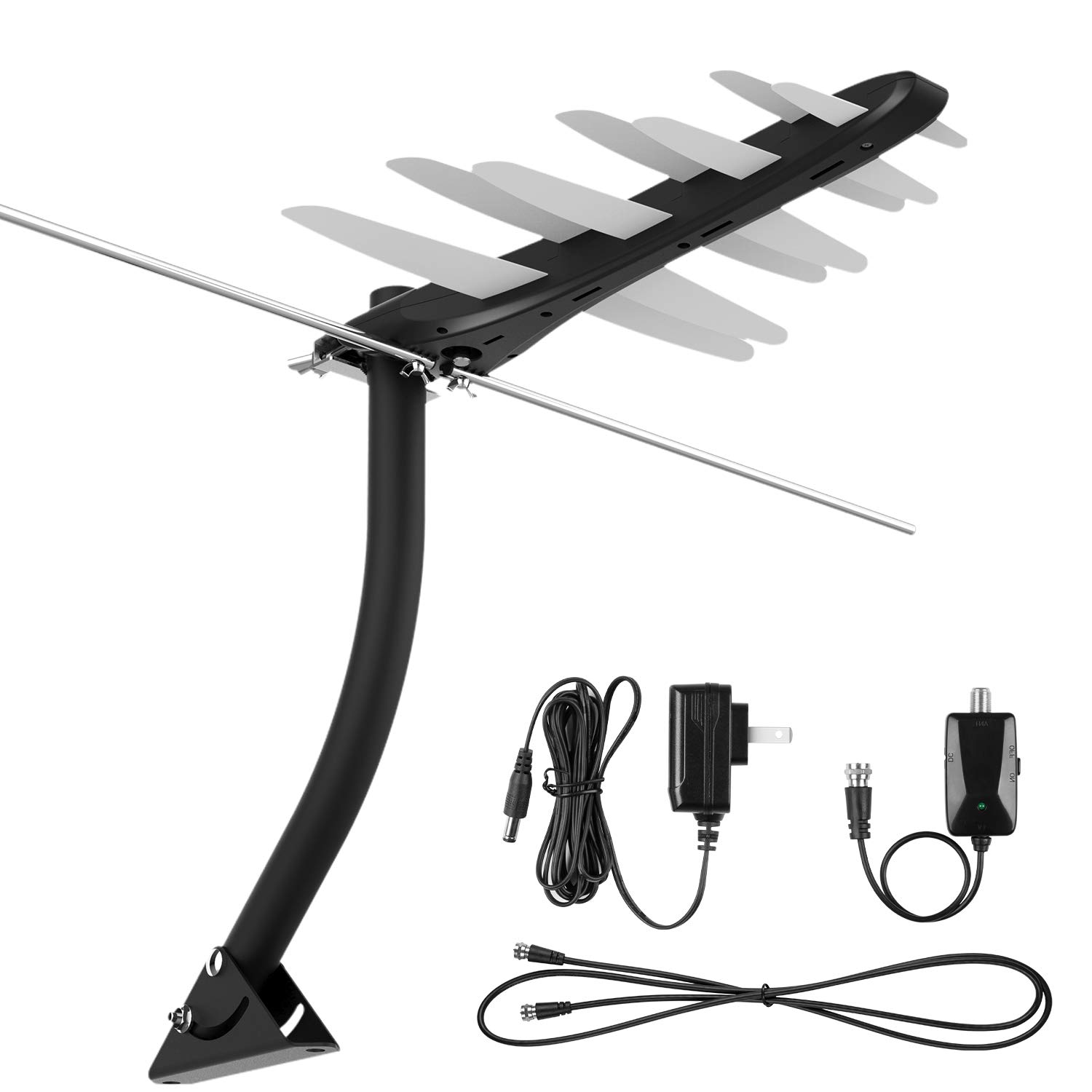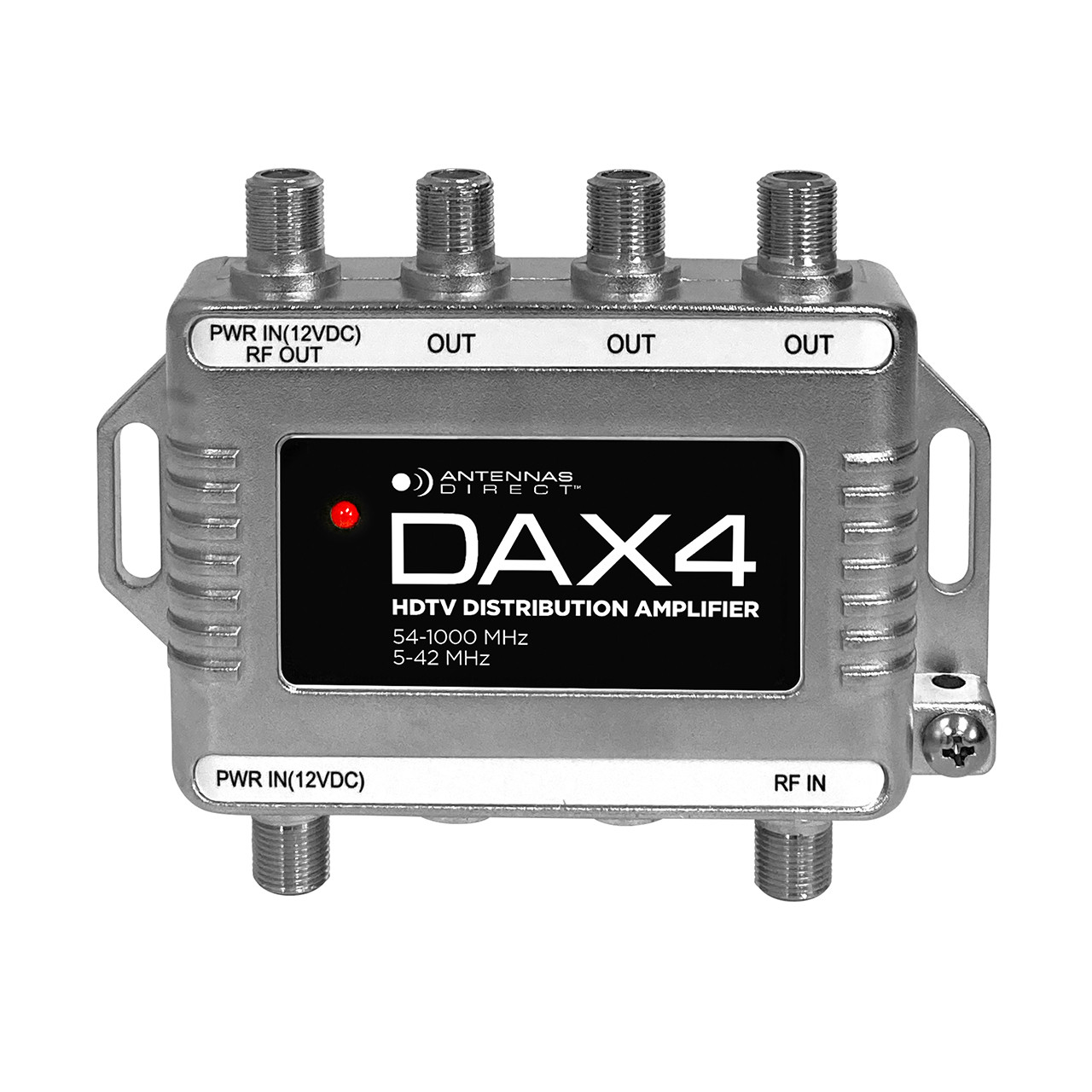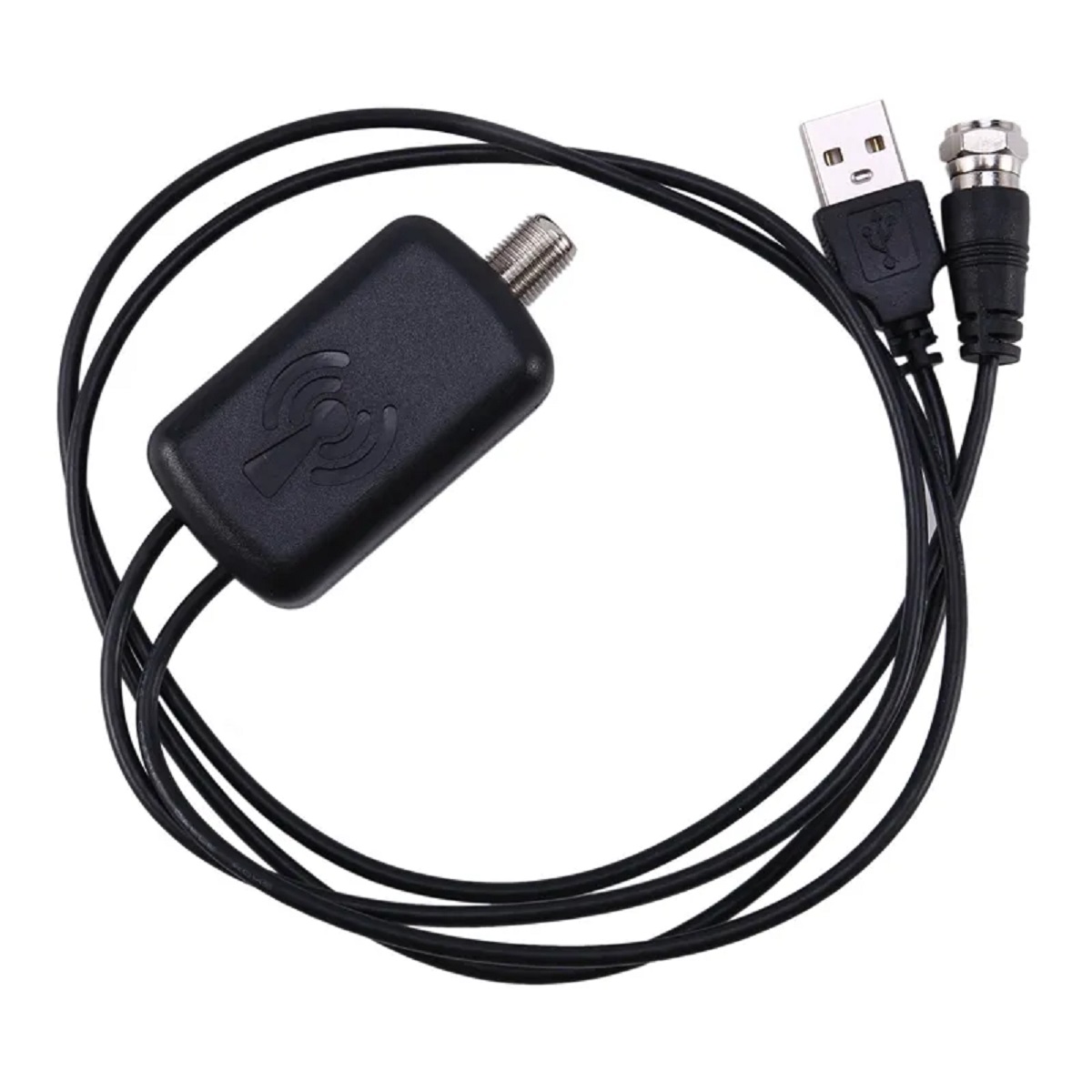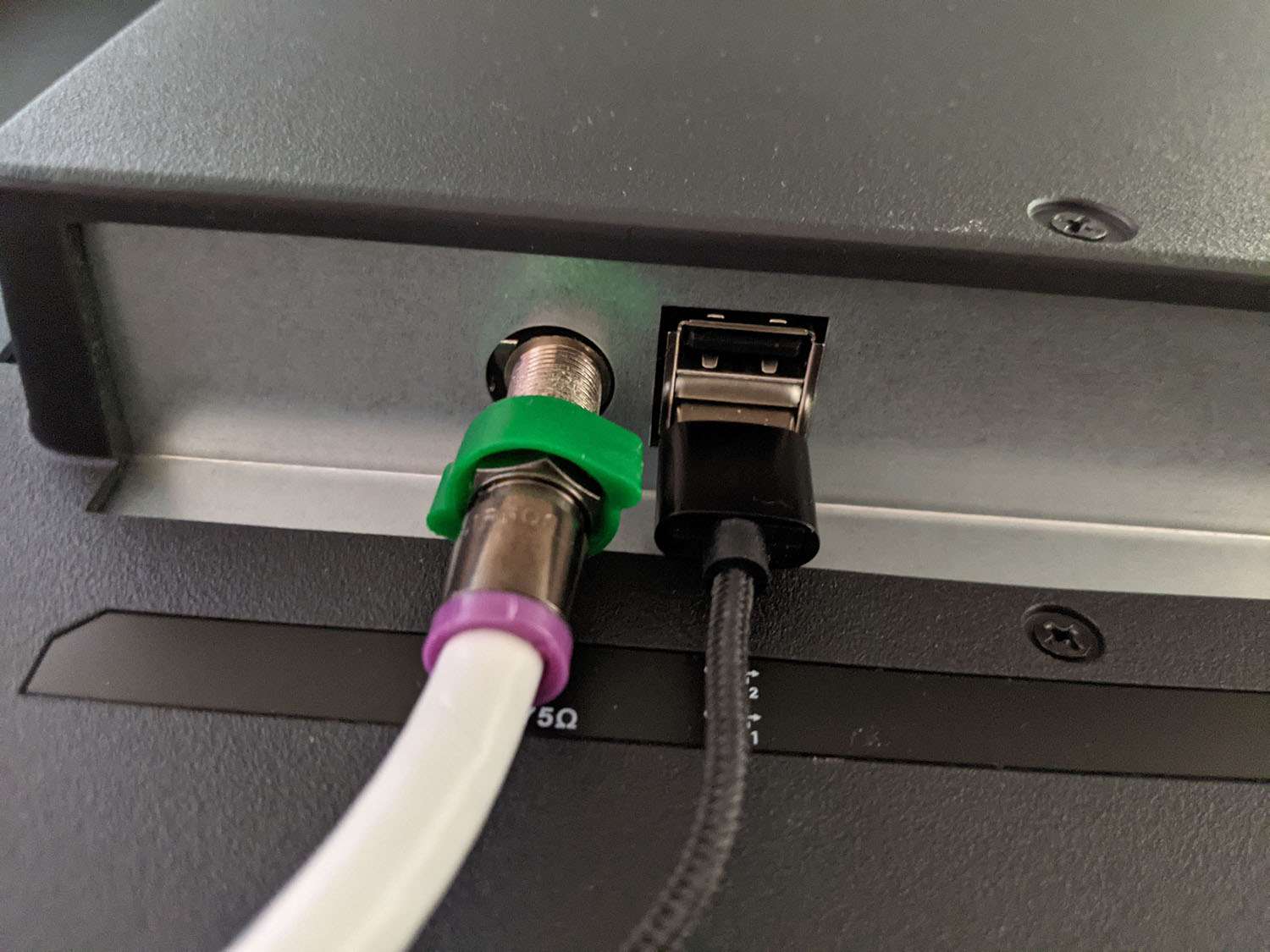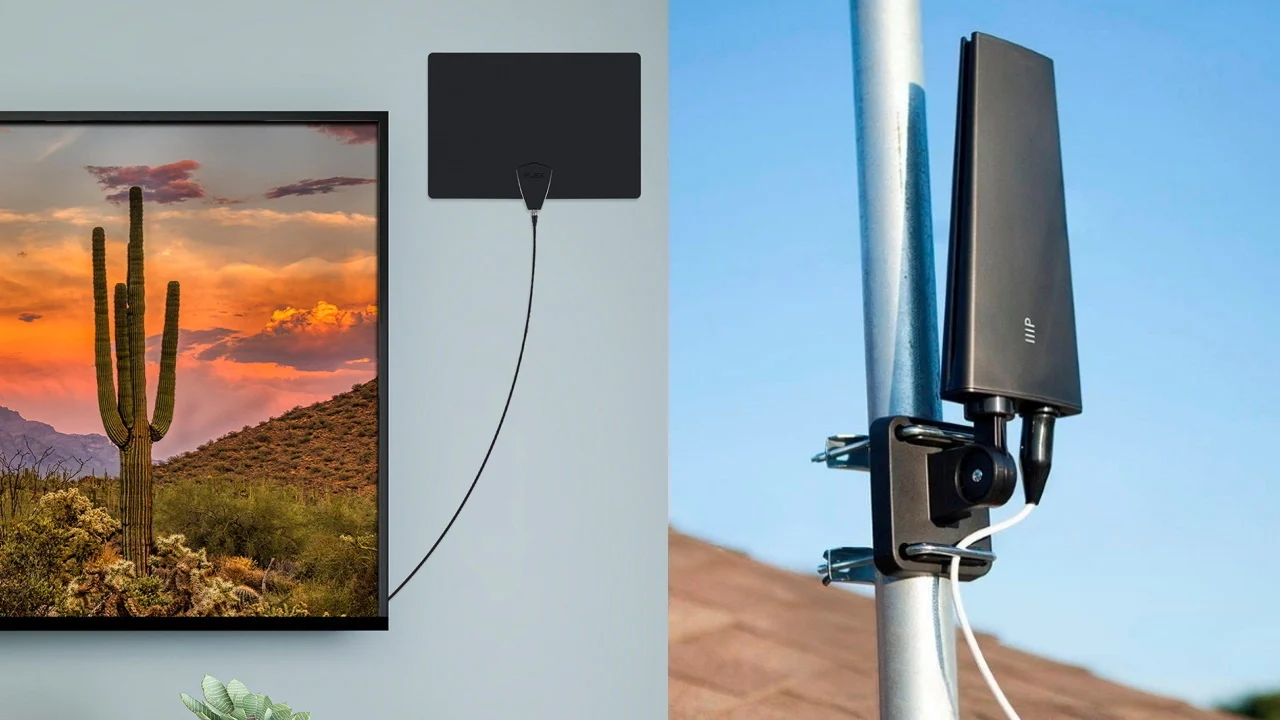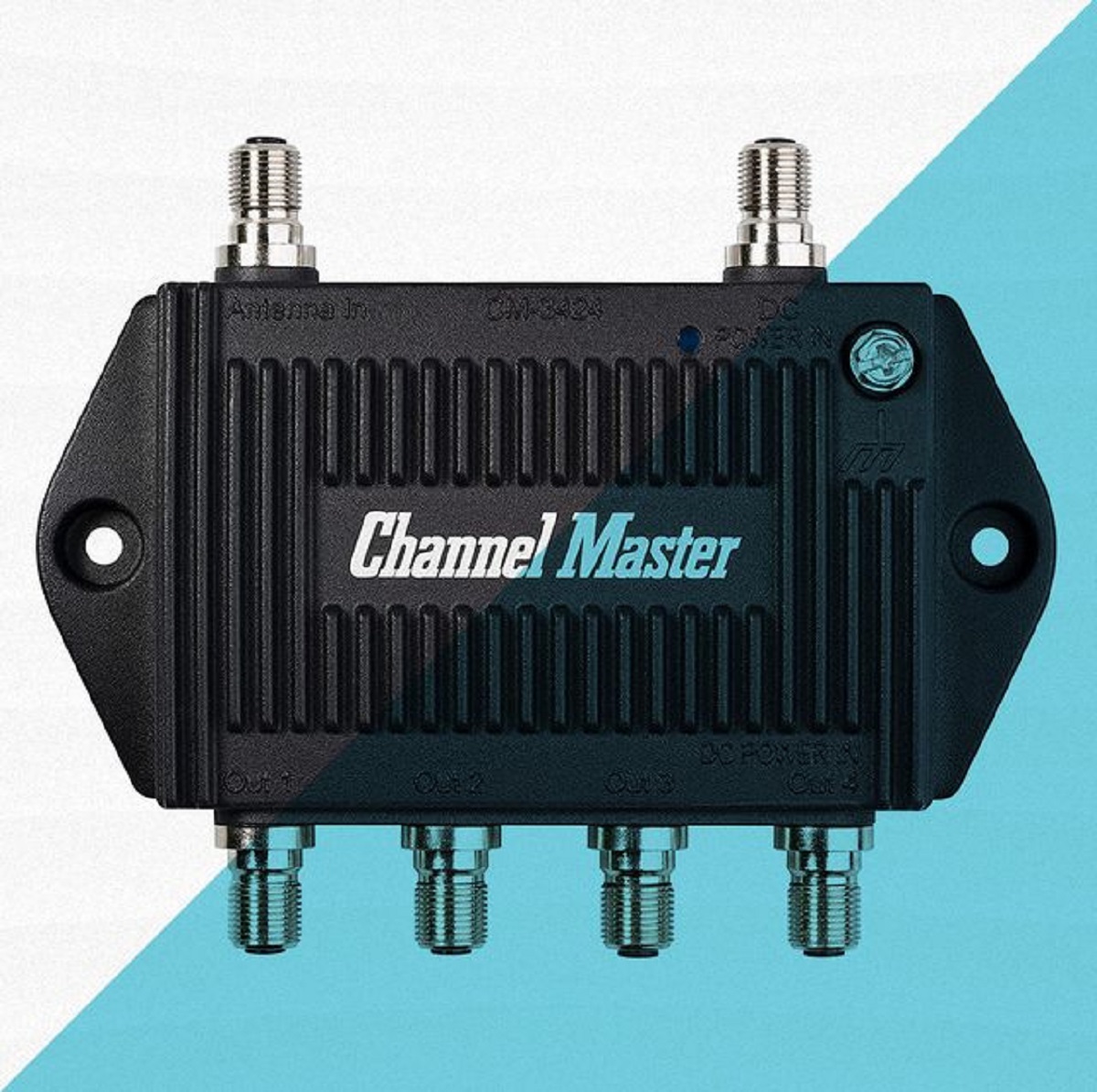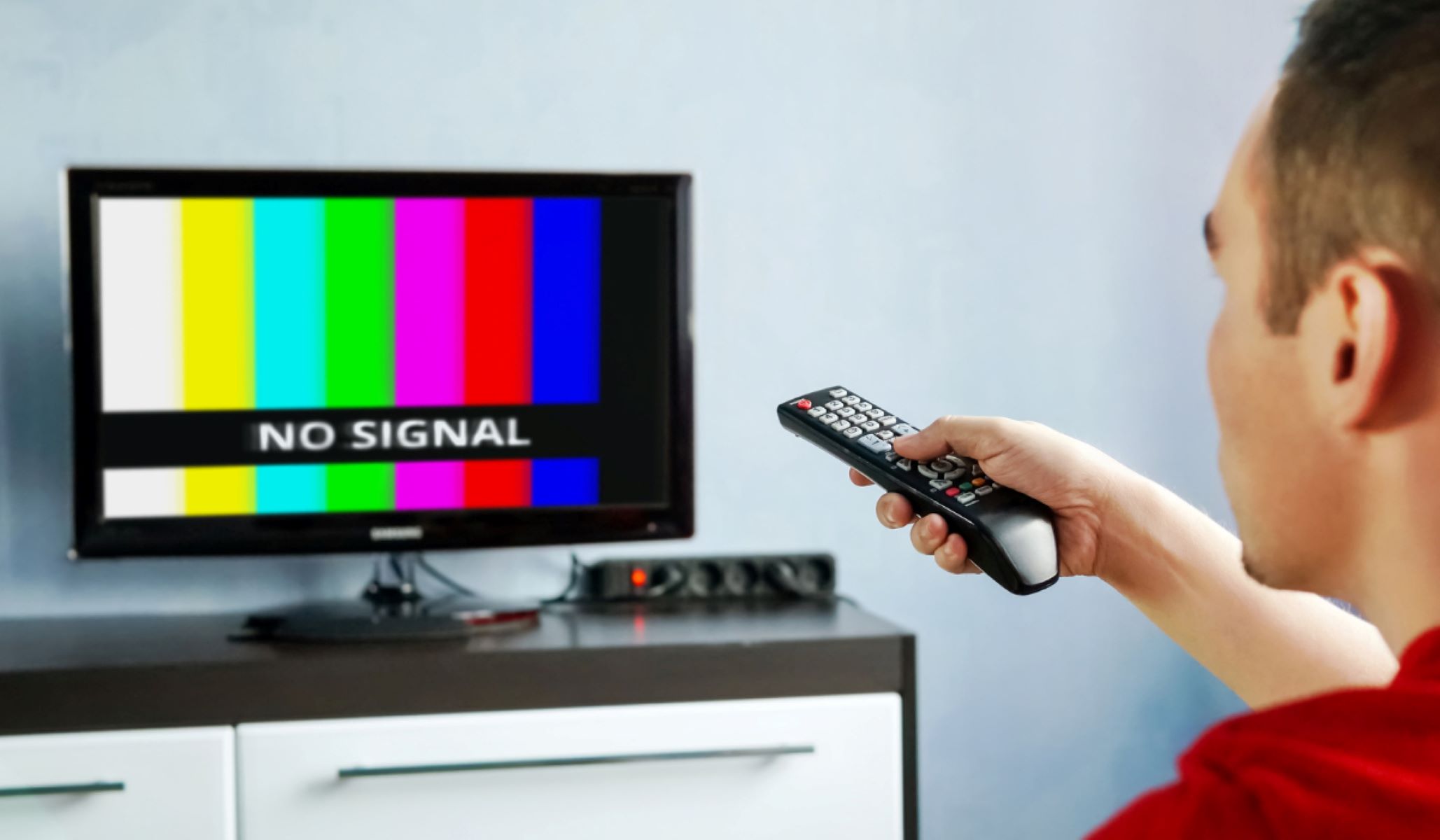Introduction
Welcome to this informative guide on how to check TV antenna signal strength. In this digital age, where streaming services and cable subscriptions dominate the entertainment industry, many people still value the reliability and cost-effectiveness of over-the-air television. However, for optimal viewing experience, it’s crucial to ensure that your TV antenna is receiving a strong and clear signal.
Understanding TV antenna signal strength and how to gauge it will empower you to make the necessary adjustments and improvements to your setup, leading to an enhanced TV viewing experience. Whether you are experiencing pixelated images, frequent signal dropouts, or inconsistent sound quality, checking your antenna’s signal strength can help identify potential issues and allow you to take appropriate measures.
To accurately check your TV antenna signal strength, you need to be familiar with some key concepts and techniques. This guide will walk you through the importance of monitoring signal strength, different methods to assess it, the factors that can affect it, and tips for improving signal reception. By the end, you’ll be equipped with the knowledge and tools to ensure optimal TV antenna performance.
Keep in mind that as technology advances, so does the complexity of TV antenna systems. Factors such as proximity to broadcasters, outdoor or indoor antenna installations, and the overall signal landscape in your area can all influence signal strength. By understanding these aspects and implementing the right strategies, you can achieve the best possible TV reception with your antenna.
Understanding TV Antenna Signal Strength
TV antenna signal strength refers to the power and quality of the signal received by your TV antenna from broadcasting towers. It determines the clarity and reliability of your television channels. Measured in decibels (dB), a stronger signal indicates a better connection and more stable reception.
Signal strength can be affected by various factors, including distance from broadcasting towers, obstacles such as buildings or trees, interference from other electronic devices, and atmospheric conditions. Understanding these factors can help you comprehend the complexities of TV antenna signal strength and make adjustments accordingly.
When measuring signal strength, it’s essential to distinguish between two significant components:
- Signal Quality: This refers to the purity of the received signal. A high-quality signal ensures clear, crisp images and uninterrupted sound. Poor signal quality may result in pixelation, freezing, or distorted audio.
- Signal Strength: This indicates the power of the received signal. A strong signal strength ensures a robust connection and minimizes signal loss, leading to a reliable TV reception.
Signal strength is usually represented by a numerical value, often displayed as a percentage or in dB. A higher percentage or dB value signifies a stronger signal. Some TV tuners or signal meters may also provide a visual indicator, such as a signal strength bar or signal strength meter.
Understanding TV antenna signal strength is crucial for troubleshooting reception issues. By analyzing the signal strength, you can identify if the problem lies with your antenna setup, signal interference, or environmental factors. This knowledge allows you to make informed decisions regarding antenna positioning, amplification, or the need for additional equipment to boost signal strength.
Keep in mind that signal strength requirements may vary depending on the channels and broadcast standards in your area. In areas with strong signal coverage, even a moderate signal strength may suffice. However, in fringe or low-signal areas, a stronger signal becomes essential for reliable TV reception.
Now that we have a basic understanding of TV antenna signal strength, let’s explore why it is important to check and monitor signal strength regularly.
Importance of Checking TV Antenna Signal Strength
Regularly checking your TV antenna signal strength is essential for ensuring optimal TV viewing experience. Here are a few reasons why monitoring signal strength is significant:
- Improved Picture Quality: A strong TV antenna signal ensures high-definition picture quality without any pixelation, artifacts, or distortions. By monitoring signal strength, you can identify any issues and make necessary adjustments to enjoy crisp, clear images.
- Enhanced Sound Quality: A strong signal also guarantees consistent and immersive sound. Checking signal strength allows you to detect any audio anomalies and take appropriate actions for better sound reproduction.
- Stable Reception: Signal dropouts and interruptions can be frustrating, especially during your favorite TV shows or sports events. By monitoring signal strength, you can address weak signals or interference that may cause disruptions, ensuring a reliable and uninterrupted TV reception.
- Access to More Channels: Stronger antenna signal strength opens up the possibility of receiving additional channels and broadcasts that may be out of reach with a weaker signal. By optimizing your TV antenna performance, you can explore a wider range of programming options.
- Troubleshooting Reception Issues: Monitoring signal strength helps in identifying the root cause of reception issues. Whether it’s due to signal interference, antenna misalignment, or equipment malfunction, knowing the signal strength can guide you in troubleshooting and resolving the problem effectively.
- Cost Savings: Enjoying free, over-the-air TV through your antenna is a cost-effective alternative to cable or satellite subscriptions. By maintaining a strong signal, you can avoid additional expenses associated with upgrading equipment or switching to paid services.
By regularly checking TV antenna signal strength, you can ensure that you are receiving the best possible signal for your location. It empowers you to make informed decisions regarding antenna positioning, amplification, or even considering the need for additional equipment to boost signal strength.
In the next section, we will explore different methods that you can use to check TV antenna signal strength and ensure optimal reception.
Methods to Check TV Antenna Signal Strength
There are several methods you can use to check TV antenna signal strength and assess the quality of the signal received. These methods range from using dedicated signal meters to utilizing signal strength meter apps or analyzing picture quality and scanning channels. Let’s explore these methods in more detail:
Method 1: Using Television Signal Meter
A television signal meter, also known as a signal finder or signal strength meter, is a handheld device specifically designed to measure TV antenna signal strength. These meters typically display signal strength in dB or as a percentage, allowing you to determine the quality of the signal quickly.
To use a signal meter, connect it between your TV antenna and TV, following the instructions provided by the manufacturer. Adjust the position and direction of your antenna while monitoring the signal meter readings. The goal is to find the optimal position that maximizes signal strength.
Method 2: Utilizing TV Antenna Signal Strength Meter Apps
If you prefer a more convenient and readily available solution, you can utilize TV antenna signal strength meter apps on your smartphone or tablet. These apps leverage the built-in hardware of your device, such as the accelerometer or gyroscope, to measure signal strength.
Signal strength meter apps typically display the signal strength using visual indicators, such as signal bars, or numerical values. They also provide additional information about the received channels, allowing you to identify the strongest signals and make necessary adjustments to your antenna setup.
Method 3: Analyzing Picture Quality and Scanning Channels
An alternative method to gauge TV antenna signal strength is by analyzing the picture quality and scanning available channels on your TV. Start by performing an auto-scan or manual scan using your TV’s built-in tuner. This scan will detect and save all available channels.
Next, assess the picture and sound quality of each channel. Look for any pixelation, distortions, or signal dropouts. Channels with consistently good picture and sound quality indicate stronger signal strength. On the other hand, channels with poor quality may hint at weaker signals that require signal optimization.
Keep in mind that this method may not provide precise numerical measurements of signal strength, but it can still help you identify potential issues and perform necessary adjustments.
By utilizing these methods, you can check the TV antenna signal strength and identify any areas that require improvement in your antenna setup. In the next section, we will delve into the factors that can affect TV antenna signal strength and how to mitigate them for better reception.
Method 1: Using Television Signal Meter
One effective method to check TV antenna signal strength is by using a television signal meter. A television signal meter, also known as a signal finder or signal strength meter, is a handheld device specifically designed to measure TV antenna signal strength. With its easy-to-read display and accurate readings, a signal meter can help you determine the optimal positioning of your antenna for optimal signal reception.
To use a television signal meter, you will first need to connect it between your TV antenna and TV. The specific connection method may vary depending on the type of signal meter you have, so be sure to follow the manufacturer’s instructions. Once connected, the signal meter will start displaying signal strength readings, usually in decibels (dB) or as a percentage.
Now, it’s time to adjust the position and direction of your antenna while closely monitoring the signal meter readings. Start by rotating the antenna slowly and in small increments. As you rotate, observe the changes in signal strength on the meter. Aim to find the position with the highest signal strength.
You may need to try different locations and orientations to achieve the optimal signal strength. Keep in mind that signal strength can be influenced by factors such as obstacles (buildings, trees, etc.), distance from broadcasting towers, and local terrain. While adjusting the antenna, be aware of these factors and make slight adjustments accordingly.
Once you have found a position that provides satisfactory signal strength, lock the antenna in place and make note of any other channels you may have discovered during the process. It’s also a good idea to perform a channel scan on your TV to ensure that it detects and saves all available channels in your area.
Television signal meters are widely available for purchase online or at electronics stores. When choosing a signal meter, look for one that is compatible with your antenna type (indoor or outdoor) and provides accurate and reliable signal strength readings. Consider reading customer reviews and ratings to find a quality signal meter that suits your needs and budget.
Using a television signal meter is a proactive approach to ensure that your TV antenna is receiving optimal signal strength. By taking the time to fine-tune your antenna’s positioning with the help of a signal meter, you can enjoy crystal-clear TV reception and minimize common issues such as pixelation, signal dropouts, and sound distortions.
In the next section, we will explore another method to check TV antenna signal strength, which involves using signal strength meter apps on your smartphone or tablet.
Method 2: Utilizing TV Antenna Signal Strength Meter Apps
Another convenient method to check TV antenna signal strength is by utilizing signal strength meter apps on your smartphone or tablet. These apps leverage the built-in hardware of your device, such as the accelerometer or gyroscope, to measure and display the signal strength of your TV antenna.
Signal strength meter apps are easily accessible, as they can be downloaded directly from your device’s app store. Search for “TV signal strength meter” or similar keywords to explore the available options. It’s important to note that these apps may have varying features and compatibility, so read user reviews and ratings to find one that suits your needs.
Once you have installed a signal strength meter app, open it and grant the necessary permissions, such as accessing your device’s sensors and location. These permissions are required for the app to accurately measure signal strength and provide relevant information based on your location.
Most TV antenna signal strength meter apps use visual indicators, such as signal bars, to represent signal strength. The more bars displayed, the stronger the signal. Some apps may also provide numerical values or percentages to provide a more precise measurement.
To use a signal strength meter app effectively, follow these steps:
- Positioning: Place your smartphone or tablet near your TV antenna setup. Ensure that it is in a stable position, eliminating any movement that could affect signal readings.
- Launch the App: Open the signal strength meter app on your device. Allow the app to detect your current location, as this information is crucial for accurate signal strength measurement.
- Calibration: Depending on the app, you may need to perform a calibration process to establish a baseline for signal strength measurement. Follow the on-screen instructions to calibrate the app.
- Measurement: Once calibrated, the app will display the current signal strength of your TV antenna. Pay attention to the visual indicators, numerical values, or percentages to assess the strength of your signal.
- Optimization: If the signal strength is weak or below your desired level, you can adjust the position and orientation of your antenna and monitor the changes in signal strength displayed on the app. Experiment with different angles and locations until you achieve the desired signal strength.
Utilizing TV antenna signal strength meter apps provides you with a portable and user-friendly solution for checking signal strength. With real-time readings at your fingertips, you can make immediate adjustments to your antenna setup for maximum signal reception.
In the next section, we will explore an alternative method to gauge TV antenna signal strength by analyzing picture quality and scanning available channels on your TV.
Method 3: Analyzing Picture Quality and Scanning Channels
An alternative method to check TV antenna signal strength is by analyzing the picture quality and scanning available channels on your TV. This method allows you to assess the strength of your TV antenna’s signal by observing the clarity and reliability of the received channels.
Start by performing an auto-scan or manual scan on your TV to search for available channels. This scan captures all the broadcasting channels in your area and saves them in your TV’s memory. Refer to your TV’s user manual to determine how to initiate a channel scan.
Once the scan is complete, proceed to watch each channel and closely observe the picture quality and sound. Look for any pixelation, artifacts, or disruptions in the image. Channels with smooth, clear, and stable visuals typically indicate a stronger signal, while channels with distortions or inconsistent picture quality may hint at weaker signal reception.
It’s important to compare the quality of different channels and take note of any patterns. Channels that consistently exhibit better picture and sound quality are likely to have a stronger signal. On the other hand, channels with persistent issues may require attention and signal optimization.
If you encounter channels with subpar picture quality, consider adjusting the position and orientation of your TV antenna. Small changes in the antenna’s placement can have a significant impact on signal reception. Continuously monitor the picture quality as you make adjustments to find the optimal position that maximizes signal strength.
Additionally, pay attention to any channels that you may not have discovered during the initial channel scan. If the signal strength is weak, your TV might have missed some channels during the scan. It’s worth manually tuning to specific frequencies to see if there are any hidden channels with stronger signals.
While this method may not provide precise measurements of signal strength in decibels or percentages, it serves as a practical way to assess the overall performance of your TV antenna. By analyzing the picture quality and scanning available channels, you can identify areas that require signal improvement and take appropriate actions to optimize your TV antenna setup.
In the next section, we will explore the factors that can affect TV antenna signal strength and provide tips on improving signal reception.
Factors that Affect TV Antenna Signal Strength
TV antenna signal strength can be influenced by various factors, and understanding these factors is crucial for optimizing your TV reception. Here are some key elements that can affect TV antenna signal strength:
- Distance from Broadcasting Towers: The distance between your TV antenna and the broadcasting towers plays a significant role in signal strength. The farther you are from the towers, the weaker the signal may be. It’s important to consider the proximity of your location to the nearest broadcasting towers when assessing and improving signal strength.
- Obstructions and Interference: Buildings, trees, hills, and other physical obstructions between your TV antenna and the broadcasting towers can weaken signal strength. For optimal reception, try to position your antenna in a location with minimal obstructions. In some cases, using a higher tower or installing the antenna outdoors can help overcome these obstacles.
- Signal Path and Reflections: Signal path refers to the direct line between your TV antenna and the broadcasting towers. Any obstacles or reflections along this path can cause signal degradation. Reflections occur when the signal bounces off structures and interferes with the main signal. Minimizing reflections and ensuring a clear signal path can help enhance signal strength.
- Atmospheric Conditions: Weather conditions, such as heavy rain, thunderstorms, or high winds, can affect TV antenna signal strength. These conditions may introduce additional interference and weaken the signal temporarily. While you can’t control the weather, being aware of its impact can help you understand any temporary fluctuations in signal strength.
- Antenna Quality and Placement: The quality and placement of your TV antenna plays a vital role in signal reception. Using a high-quality antenna designed for your specific needs and region can significantly improve signal strength. Additionally, placing the antenna in a location with optimal line-of-sight to the broadcasting towers and avoiding nearby electronic devices can help mitigate signal interference.
- Electromagnetic Interference (EMI): EMI from nearby electronic devices, such as routers, Wi-Fi routers, and microwaves, can introduce interference and impact TV antenna signal strength. Keep your TV antenna away from such devices and ensure proper grounding to minimize EMI’s effects.
It’s important to note that signal strength is not solely determined by one factor but is influenced by a combination of these elements. Analyzing and addressing these factors can help you optimize TV antenna signal strength and achieve better reception. By understanding how these factors impact your signal, you can take appropriate measures to improve signal quality and minimize issues such as pixelation, signal dropouts, and sound disruptions.
In the next section, we will provide some useful tips to enhance TV antenna signal strength and optimize reception.
Tips for Improving TV Antenna Signal Strength
To enhance your TV antenna’s signal strength and optimize TV reception, consider implementing the following tips:
- Position your antenna: Place your TV antenna in a location with a clear line-of-sight to the broadcasting towers. Avoid obstructions such as buildings, trees, and hills. Higher placement, such as on a roof or in an attic, can also improve signal reception.
- Adjust antenna orientation: Experiment with different angles and orientations for your antenna. Slight adjustments in positioning can have a significant impact on signal strength. Monitor the signal strength readings or picture quality as you make changes.
- Utilize an outdoor antenna: If possible, consider using an outdoor antenna. Outdoor antennas generally provide better signal reception due to their larger size and higher placement. They are less affected by indoor obstacles and can receive signals more efficiently.
- Use an amplifier: Amplifiers or signal boosters can enhance weak signals, especially in areas with long cable runs or multiple TV connections. However, use caution as amplifiers may also amplify noise and interfere with signal quality if not properly installed.
- Upgrade your antenna: If you’re experiencing persistent signal issues, consider upgrading to a higher-quality antenna designed for your specific location and needs. Look for antennas with higher gain, better reception capabilities, and advanced features that can improve signal strength and reception.
- Minimize interference: Keep your TV antenna away from other electronic devices that can cause electromagnetic interference (EMI). This includes routers, Wi-Fi devices, microwaves, and other sources of electrical interference. Ensuring proper grounding of your TV antenna can also help minimize EMI.
- Check cables and connections: Damaged or poorly connected cables can cause signal loss and weaken reception. Ensure that all cables are in good condition, properly connected, and free from any damage or wear. Consider using high-quality coaxial cables to minimize signal loss.
- Stay informed about broadcasting towers: Stay updated on the locations and details of nearby broadcasting towers. Knowing their positions can help you align and position your antenna more accurately for optimal signal reception.
- Keep an eye on weather conditions: Note any changes in TV reception during severe weather conditions. Heavy rain, thunderstorms, or high winds can temporarily affect signal strength. Be patient and wait for the weather to clear before troubleshooting or making significant adjustments.
- Consult professionals: If you’re still experiencing signal issues or need assistance optimizing your antenna setup, consider consulting with professionals or experts in TV antenna installations. They can provide personalized advice and diagnose specific problems that may be affecting your signal strength.
Implementing these tips can significantly improve your TV antenna signal strength and help you achieve a more reliable and enjoyable TV viewing experience. Experiment with different strategies and adjustments to find the best approach for your specific location and antenna setup.
In the next section, we will wrap up this comprehensive guide on checking TV antenna signal strength and improving reception.
Conclusion
Checking TV antenna signal strength is crucial for ensuring optimal TV viewing experience. By understanding the factors that affect signal strength and using appropriate methods to assess it, you can make informed decisions to improve reception.
Whether you utilize a television signal meter, signal strength meter apps, or analyze picture quality and scan channels, each method provides valuable insights into the strength of your TV antenna’s signal. These methods allow you to identify areas that require signal improvement and take appropriate actions to optimize your antenna setup.
Factors such as distance from broadcasting towers, obstructions, atmospheric conditions, antenna quality, and interference can impact signal strength. By considering these factors and implementing the tips provided, you can enhance signal reception and minimize common issues such as pixelation, signal dropouts, and sound disruptions.
Remember that achieving the best TV antenna signal strength requires patience and experimentation. Fine-tuning the position, orientation, and placement of your antenna, as well as minimizing interference, can significantly improve signal quality.
Stay informed about nearby broadcasting towers, weather conditions, and technological advancements in TV antenna systems. Regularly check your TV antenna signal strength to ensure that you are receiving the best possible signal for your location.
By following the guidelines and tips outlined in this guide, you can enjoy optimal TV antenna performance and make the most out of your free, over-the-air television experience.







